The call of the Carden
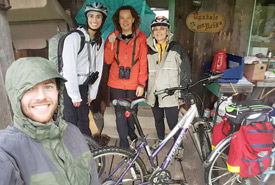
Team Pedalling for Nature includes Cameron Curran, Aiesha Aggarwal, Dorthea Hangaard and Susan Blayney. (Photo by NCC)
Just imagine an opportunity to embark on an expedition that immerses you in the depths of wilderness, where you get to learn, explore and engage with nature alongside like-minded people — a whirlwind "safari," if you will. For 24 hours, you’re observing species at risk, breathing fresh air and taking immediate conservation action — all while having the time of your life.
Sometimes there isn't a need to travel thousands of kilometres from home to have these kinds of experiences. With an increased need to spread awareness on the effects of climate change, what better time than now to learn about nature at the local level?
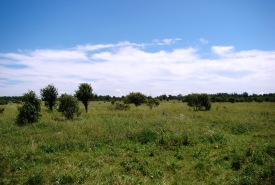
Carden Alvar, ON (Photo by NCC)
The Couchiching Conservancy welcomes participants of all skill levels to partake in the annual Carden Challenge. Thanks to the generosity of supporters far and wide, this year this renowned biodiversity and birding marathon raised more than $19,000 for conservation on the Carden Alvar, east of Orillia, Ontario. This mosaic of globally rare habitat is home to some of the province’s species at risk and is an important area to sustain for the long term.
This year, I took to the back roads of Carden as a member of Team Pedalling for Nature, where we set off on a mission to observe as many bird species as possible (in the recreational birding category). With bicycles as our mode of transportation, we became well-acquainted with the rain-filled potholes of the area’s roads. There is something to be said about doing the challenge by bicycle, because you are continually exposed to the natural environment throughout the entire competition. There are no car doors to open and shut, and the opportunities for viewing and listening to the wildlife around you are (mostly) constant.
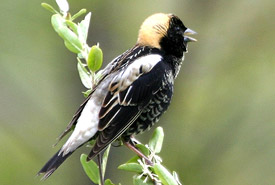
Bobolink (Photo by Bill Hubick)
One of our first close encounters was when an American bittern flew right between our team as we stood patiently on the roadside listening for grassland birds. Our attention immediately turned away from the soothing melodies of bobolink and eastern meadowlark, toward the graceful flight of this member of the heron family. There have been years when it has seemed impossible to observe the American bittern, so already we were off to a great start.
As the sun set on the horizon of the alvar, some unique species began to make their presence known. Two common nighthawks, nocturnal insect hunters, were both seen and heard within 30 metres of our team. These fascinating birds descend vertically in the sky to defend their territory during breeding season, and their wings generate a distinct "booming" sound. It's one of many forms of entertainment nature allowed us to observe while participating in the challenge.
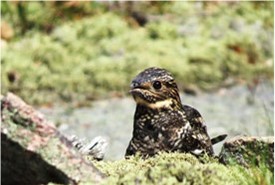
Common nighthawk — a species at risk. (Photo by NCC)
The exciting adventure continued for Team Pedalling for Nature, including hearing a pack of coyotes, or perhaps coywolves, as we pedalled through the night. The eastern whip-poor-will was another species that fuelled our adrenalin as we rolled along the roads of the alvar. Hearing and seeing these wild creatures was just one more way the experience connected us to nature.
Pedalling the route really awakens one's self to the realities of the natural world. Moving at a good pace down the roads at night was one of my favourite experiences of the Carden Challenge. With a good headlamp and an enthusiastic and ambitious team, I found spotting or hearing species to be both fun and rewarding. This was also true during our daytime pedalling.
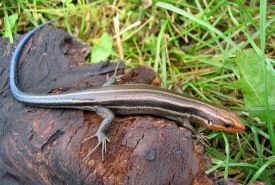
The five-lined skink, Ontario's only lizard species (Photo by Ryan M. Bolton)
Our list of observed species grew, until we reached 95 for the 24-hour period. Our team was full of energy and we continued until we reached the 60-kilometre mark of our journey.
Overall, 150 species of birds were counted by eight birding teams, and three biodiversity teams found several new species, including eastern red-backed salamander, ebony boghaunter, a species of dragonfly new to Carden and a five-lined skink.
So, next May, if you're feeling adventurous and eager to learn, gather your colleagues and friends, or join the Carden Challenge as an individual. You'll thank yourself for doing so.
The Carden Challenge is an amazing way to take part in a local, grassroots initiative to conserve the important habitats of the Carden Alvar.
This post originally appeared in the Orillia Packet.


